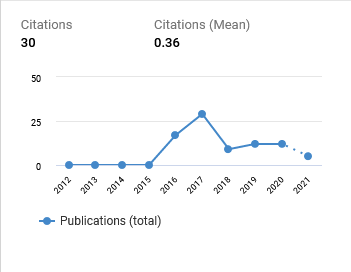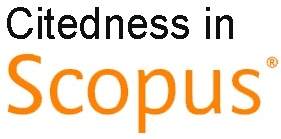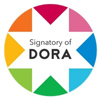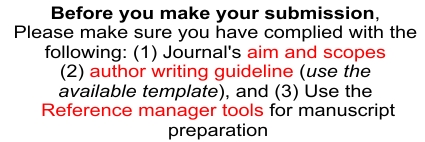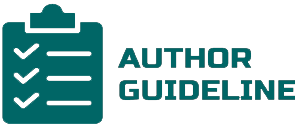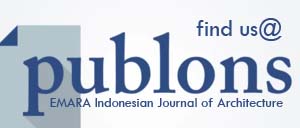Exploring the city as text and dominant discourse place
DOI:
https://doi.org/10.29080/eija.v6i1.894Keywords:
reading place, landscape interpretation, the city as text, the dominant discourseAbstract
The study has tried to answer the question of how the dominant discourse in the city tries to create meanings and forms an interpretation by using signs and symbols. Accordingly, common semiotics of Dur Untash city has been investigated. In three steps, including preparation, organization, and final report or conclusion, a content analysis method has been done. First, deconstruction views of reading place are explained and how an interpretation discourse is formed. Then we investigated some standard semantic features of Dur Untash city and an image of some familiar ideas and signs is projected. Finally, a bipolar semantic interpretation of these signs and images is presented. The dominant discourse of the city has wanted to catch a meaning, but none of its symbols and characters has such a valid capacity and authority. Therefore, the dominant discourses could not conjure spatial features controlled by meaning-making
Downloads
References
Abbinnett, R. (2003). Culture and Identity: Critical Theories. SAGE.
Anandarajan, M., Hill, C., & Nolan, T. (2018). Practical Text Analytics: Maximizing the Value of Text Data. Springer.
Barthes, R. (1968). Elements of Semiology. Farrar, Straus and Giroux.
Barthes, R. (1994). The Semiotic Challenge. University of California Press.
Bennington, G., & Derrida, J. (1993). Jacques Derrida. University of Chicago Press.
Bosworth, C. E. (1968). The Development of Persian Culture under the Early Ghaznavids. Iran, 6(1), 33–44. https://doi.org/10.1080/05786967.1968.11834438
Britannica. (2018). In Encyclopedia Britannica. Creative Media Partners, LLC.
Bryce, T. (2009). The Routledge Handbook of the Peoples and Places of Ancient Western Asia: From the Early Bronze Age to the Fall of the Persian Empire. Taylor & Francis.
D’Cruz, C. (2016). Identity Politics in Deconstruction: Calculating with the Incalculable. Routledge.
Evans, J. C. (1991). Strategies of Deconstruction: Derrida and the Myth of the Voice. University of Minnesota Press.
Fisher, D., & Shivers, O. (2008). Building language towers with Ziggurat. Journal of Functional Programming, 18(5–6), 707–780. https://doi.org/10.1017/S0956796808006928
Freshwater, D., & Rolfe, G. (2004). Deconstructing Evidence Based Practice. Psychology Press.
Gabriel, F. (2013). Deconstructing Youth: Youth Discourses at the Limits of Sense. Springer.
Ghirshman, R. (1961). The Ziggurat of Tchoga-Zanbil. Scientific American, 204(1), 68–77. JSTOR. https://doi.org/10.2307/24940741
Gieseking, J. J., Mangold, W., Katz, C., Low, S., & Saegert, S. (2014). The People, Place, and Space Reader. Routledge.
Gottdiener, M., & Lagopoulos, A.-P. (1986). The City and the Sign: An Introduction to Urban Semiotics. Columbia University Press.
Harvey, D. (1970). Social Processes and Spatial Form: An Analysis of the Conceptual Problems of Urban Planning. Papers in Regional Science, 25(1), 47–69. https://doi.org/10.1111/j.1435-5597.1970.tb01477.x
Harvey, D. (2010). Social Justice and the City (Vol. 1). University of Georgia Press.
Hurst, A. M. (2008). Derrida Vis-à-vis Lacan: Interweaving Deconstruction and Psychoanalysis. Fordham University Press.
Keller, S. (1988). Review of The City and the Sign: An Introduction to Urban Semiotics [Review of Review of The City and the Sign: An Introduction to Urban Semiotics, by Mark Gottdiener & A. Ph. Lagopoulos]. Contemporary Sociology, 17(3), 346–348. https://doi.org/10.2307/2069642
Knox, P. L. (1984). Symbolism, Styles and Settings. Architecture and Behaviour, 2(2), 107–122. https://www.epfl.ch/labs/lasur/wp-content/uploads/2018/05/KNOX.pdf
Krampen, M. (2013). Meaning in the Urban Environment. Routledge.
Kyngäs, H., Mikkonen, K., & Kääriäinen, M. (2019). The Application of Content Analysis in Nursing Science Research. Springer Nature.
Lacey, A. (2002). Dictionary of Philosophy. Routledge.
Lagasse, P. (Ed.). (2003). The Columbia encyclopedia (Sixth edition). Columbia University Press.
Morris, A. E. J. (2013). History of Urban Form Before the Industrial Revolution (3rd Edition). Routledge.
Naas, M. (2003). Taking on the Tradition: Jacques Derrida and the Legacies of Deconstruction. Stanford University Press.
Nas, P. J. M. (2016). Cities Full of Symbols: A Theory of Urban Space and Culture. Leiden University Press.
Norris, C., & Roden, D. (2003). Jacques Derrida (Vol. 4). SAGE.
Osborne, J. F. (2014). Approaching Monumentality in Archaeology. SUNY Press.
Payne, M. (1993). Reading Theory: An Introduction to Lacan, Derrida and Kristeva. Wiley.
Pipkin, J., Gory, M. L., & Blau, J. R. (1983). Remaking the City. SUNY Press.
Potts, D. T. (2006). Elamites and Kassites in the Persian Gulf. Journal of Near Eastern Studies, 65(2), 111–119. https://doi.org/10.1086/504986
Richter, D. (2010). The A to Z of Wittgenstein’s Philosophy. Scarecrow Press.
Rohl, D. M. (1999). Legend: The Genesis of Civilisation. Arrow.
Seasoltz, R. K. (2005). A Sense of the Sacred: Theological Foundations of Christian Architecture and Art. A&C Black.
Sellers, S. (2003). The Hélène Cixous Reader. Routledge.
Staten, H. (1986). Wittgenstein and Derrida. University of Nebraska Press.
Stocker, B. (2006). Routledge Philosophy Guidebook to Derrida on Deconstruction. Routledge.
Vafadari, A. (2008). Visitor Management, the Development of Sustainable Cultural Tourism and Local Community Participation at Chogha Zanbil, Iran. Conservation and Management of Archaeological Sites, 10(3), 264–304. https://doi.org/10.1179/175355209X452804
Wales, H. G. Q. (1953). The Sacred Mountain in the Old Asiatic Religion. Journal of the Royal Asiatic Society of Great Britain and Ireland, 1/2, 23–30. JSTOR. https://doi.org/10.2307/25222606
Williams, M. (2001). Problems of Knowledge: A Critical Introduction to Epistemology. Oxford University Press.
Wittgenstein, L. (2010). Philosophical Investigations. John Wiley & Sons.
Wood, D. (1992). Derrida: A Critical Reader. Wiley.
Wood, D. (2012). Step Back, The: Ethics and Politics after Deconstruction. SUNY Press.
Wood, D., & Bernasconi, R. (1988). Derrida and Différance. Northwestern University Press.

Downloads
Published
How to Cite
Issue
Section
Categories
License
- Authors retain copyright and grant the journal right of first publication with the work simultaneously licensed under a Creative Commons Attribution ShareAlike License that allows others to share the work with an acknowledgment of the work's authorship and initial publication in this journal.
- Authors are able to enter into separate, additional contractual arrangements for the non-exclusive distribution of the journal's published version of the work (e.g., post it to an institutional repository or publish it in a book), with an acknowledgment of its initial publication in this journal.
- Authors are permitted and encouraged to post their work online (e.g., in institutional repositories, pre-print sites, or on their website) prior to and during the submission process, as it can lead to productive exchanges, as well as earlier and greater dissemination of published work.





